COMPANY MANUFACTURING PROCESS.
madam Ceramic tiles industries is clay based industries .Ceramic industries process differentiate in many steps .But most important process of ceramic tlies industries is drying process. Drying is the most energy consuming process in ceramic tiles industries. Drying process separate in two part 1. Drying with the dryer 2. drying with the kiln .In this studies we studied the behavior of the drying curve with the temperature increase in process .And also do the mass balance and energy balance of the whole drying process and find the energy needed for the drying process and energy loss from the drying process Keywords:- Ceramic , Drying ,Kiln, Mass balance ,Energy balance
-
INTRODUCTION Generally the term ‘ceramics’ (ceramic products) is used for inorganic materials with possibly some organic content, made up of non-metallic compounds and made permanent by a firing process. In addition to clay based materials, today ceramics include a multitude of products with a small fraction of clay or none at all. Ceramics can be glazed or unglazed, porous or vitrified. Firing of ceramic bodies induces time-temperature transformation of the constituent minerals, usually into a mixture of new minerals and glassy phases. Characteristic properties of ceramic products include high strength, wear resistance, long service life, chemical inertness and non toxicity, resistance to heat and fire, (usually) electrical resistance and sometimes also a specific porosity. Two types of energy are used in the ceramic industry; electric energy and chemical energy. The electric energy is used in two different ways; mechanical energy when used in the motor and fan of the machine, and thermal energy when used to heat the kilns and furnaces. The chemical energy of petroleum fuel is all converted into thermal energy through combustion reaction. Energy used in the ceramic industry is predominantly occupied by petroleum energy. The drying process in the ceramic industry is the greatest energy consumer second to the firing process. Drying means loss of moisture from the surface of the substance by evaporation, and the drying speed depends on the temperature and humidity.
Ceramic Manufacturing Process: Figure below shows the general process flow diagram of ceramic manufacturing process. (1) Raw Materials Procurement & Weighing The raw materials used in the manufacture of ceramics range from relatively impure clay materials mined from natural deposits to ultrahigh purity powders prepared by chemical synthesis. Naturally occurring raw materials used to manufacture ceramics include silica, sand, quartz, flint, silicates, and alumino silicates. The first step in the process is to weigh the raw materials required to manufacture a ceramic tile including all types of frit, feldspar and various clays. All the raw materials are accurately weighed, so that the quality of the product can be stabilized. Vol-2 Issue-3 2016 IJARIIE-ISSN(O)-2395-4396 2063 www.ijariie.com 410 Fig -1: Manufacturing process of ceramic tiles
Fine Grinding & Milling The basic beneficiation processes include crushing, grinding, and sizing or classification. Primary crushing is used to reduce the size of coarse materials, such as clays, down to approximately 1 to 5 centimeters. The most common types of crushers used are jaw crushers, cone crushers, gyratory crushers, and roll crushers. Secondary crushing or grinding reduces particle size down to approximately 1 millimeter in diameter. Fine grinding or milling reduces the particle size down to as low as 1.0 micrometer in diameter. Ball mills are the most commonly used piece of equipment for milling. (3) Filter Press During the process to make clay and ceramic slurries used for the manufacture of dinnerware, insulators, china etc, the clay slurry goes through a dewatering step prior to further processing and molding into the desired form. These slurries are extremely dense and heavy and typically require dewatering at 225 PSI feed pressure to obtain a solid cake. (4) Mixing The purpose of mixing or blunging is to combine the constituents of a ceramic powder to produce a more chemically and physically homogenous material for forming. Pug mills often are used for mixing ceramic materials. Several processing aids may be added to the ceramic mix during the mixing stage. Binders and plasticizers are used in dry powder and plastic forming; in slurry processing, deflocculants, surfactants, and antifoaming agents are added to improve processing. Liquids also are added in plastic and slurry processing. Binders are polymers or colloids that are used to impart strength to green or unfired ceramic bodies. Mixing ensures a uniform distribution of clay in the solution. It also prevents the sedimentation of clay which is desirable for the process of ceramic formation. Pug Mills are most commonly used for mixing in ceramic production.
Spray Drying Ceramic tiles are typically formed by dry pressing. Prior to pressing, many facilities granulate the ceramic mix to form a free-flowing powder, thereby improving handling and compaction. The most commonly used method of granulation is spray-drying. The slurry is injected into a drying chamber with hot gases. As the hot gases come in contact with the slurry, a powder is formed and collected in a cyclone or fabric filter. Spray dryers generally are gasfired and operate at temperatures of 70° to 570°C. After spray drying, the water content of the granules is between 35-40%.
Powder Storage The granules have to be kept in a storage bin for a few days so that its composition becomes even more homogeneous. This process makes the granules more pliable and less likely to stick to the mold. The size of powder storage bin needed will be determined by the production capacity of the plant. Generally, the most suitable size is capable of holding 400 tons of powder.
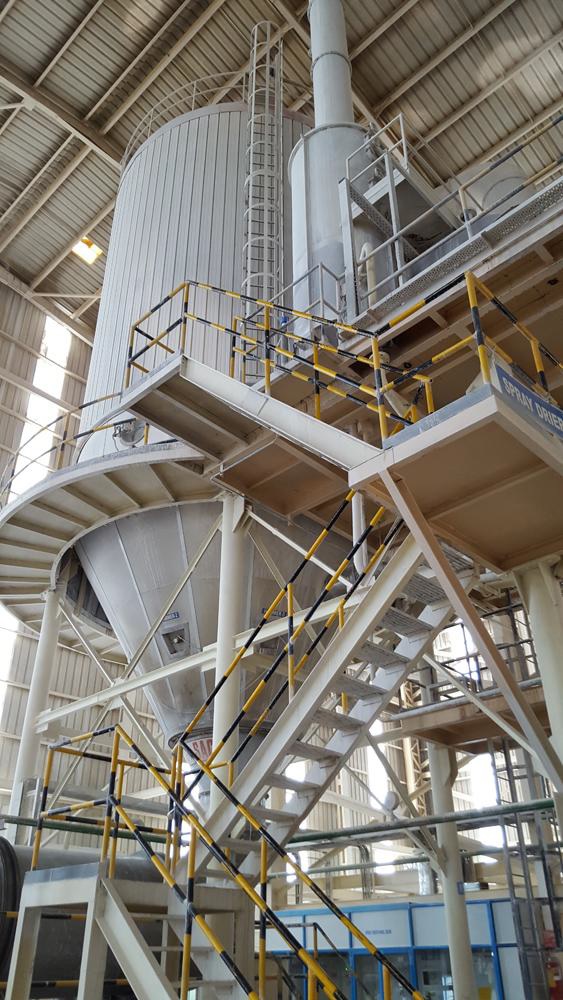
SHAPING (PRESSING)
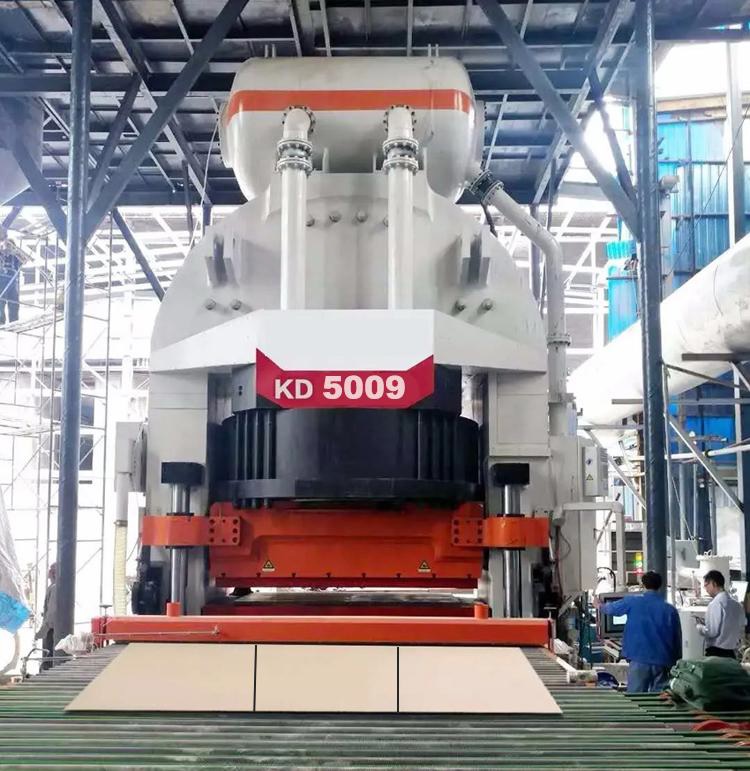
Modern Hydraulic presses can provide high compaction force,high productivity, Consistency and easy adjustment. Many presses are now fitted with electronic Cantrol units,which can check the height of units and automatically adjust the cycle To ensure size uniformity. Such presses can be readily adjusted to meet a variety Of requirements, including complicated press programmes such as those used in Forming complex refractory shapes. Hydraulic pressing is widely adopted for the Shaping of tiles. In the case of ceramic tiles,the moist powder (at 5-7% moisture Content) is pressed in shallow dies, whereas clay roof tiles are usually formed by Pressing plastic clay ‘bats’ cut from an extuded collumn.

GLAZING, ENGOBING
There is a small specialist market for glazed bricks. Glazing is most common in the manufacture of ceramic wall and floor tiles, sanitaryware and tableware and currently there is a growing market share for roof tiles as well. Engobing is mainly employed in the manufacture of clay roof tiles and ceramic wall and floor tiles. Finely ground glaze components – mainly frits in the case of ceramic tiles – are prepared as aqueous suspensions. The viscosity and suspension characteristics are adjusted to suit the method of application, which may be spraying, waterfall glazing, dry glazing or decorating. During the glazing process, the dried green ceramic ware is in most of the sectors mentioned above – except sanitaryware – hardened by biscuit firing and then, depending on the applied glaze components, covered with a glassily melting, smooth, closed transparent or dusky layer. An engobe is usually applied after the drying process, in some cases the products are engobed even as green or fired ware. During the engobing process, a fine grained, non-transparent light or coloured layer of a ceramic mass is spread to the visible or whole surface by dipping or pouring
EFI Cretaprint ceramic tile printers
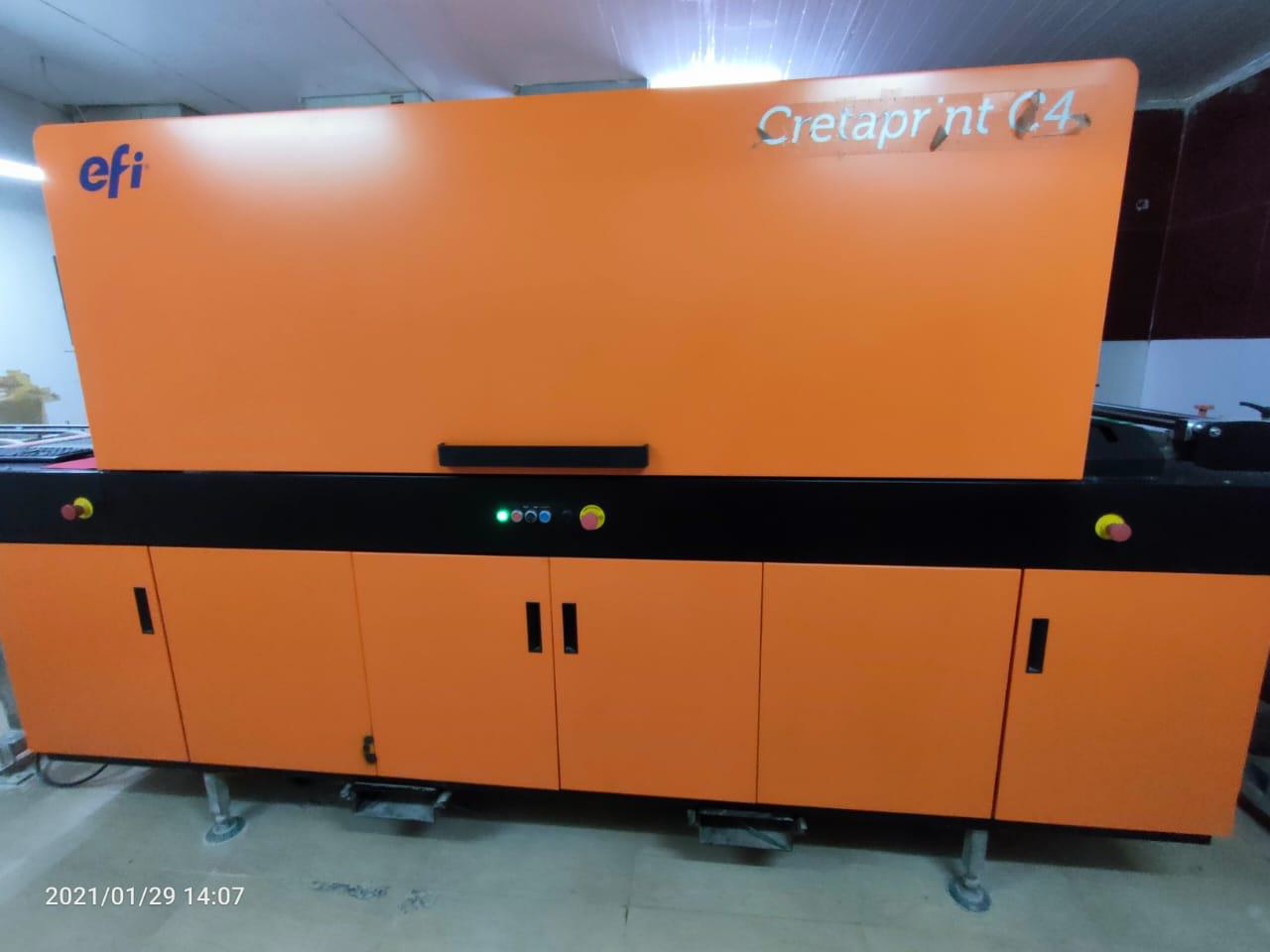
EFI™ Cretaprint® C4
Produce highly valued ceramic products with the distinctive, high print quality of the Cretaprint C4 digital inkjet printer.
EFI™ Cretaprint® inkjet printers are the most advanced digital ceramic tile decorating systems. And with the printer, Genuine EFI Cretacolor Inks and Fiery® proServer color management system working as one, EFI is the only company in the industry that supplies a total solution to help fuel your success.
The first generation of ceramic hybrid printers that are able to decorate both with water-friendly inks as well as current eco-solvent based inks. Along with digital glaze application, they are essential part of EFITM Cretaprint® Hybrid Ceramic Ecosystem.
Number of bars: Up to 12
Max. Printing width: 1138 mm
Resolution: Up to 360 dpi
Print Speed: up to 60 m/min.
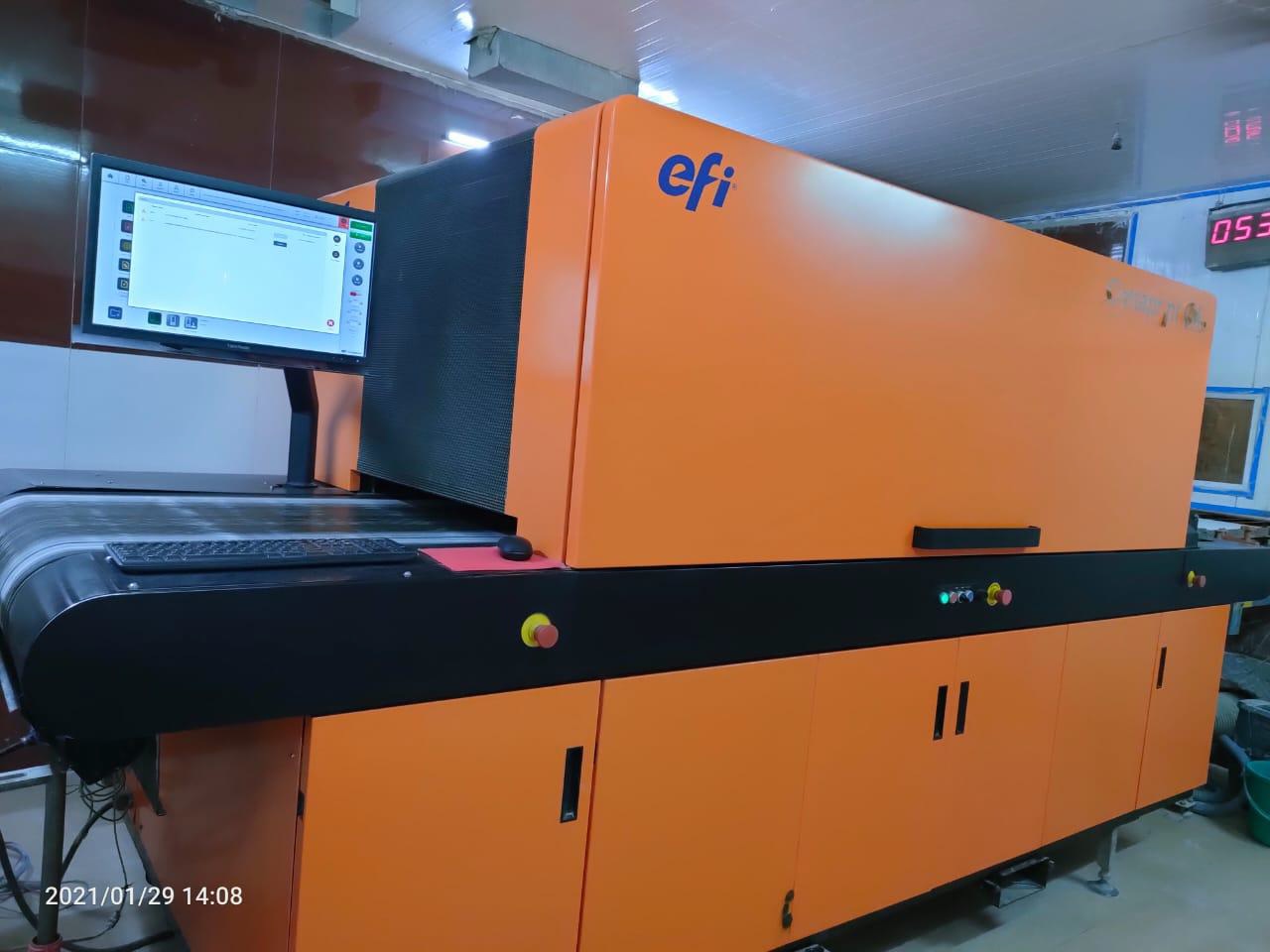
EFI™ Cretaprint® C5
This is the smart ceramic tile printer. It’s a new digital inkjet tile printing platform that stands out for its connectivity, integration and outstanding user experience.
Number of bars: Up to 12Max. Printing width: 1138 mm
Resolution: Up to 360 dpi
Print Speed: up to 60 m/min.
product_subcategory_efi_cretaprintp4_310x180_00
Produce tile decoration your market demands.
Learn More Number of bars: Up to 6 and up to 12
Max. Printing width: 1440 mm
Resolution: Up to 360 dpi
Print Speed: Up to 50 linear m / min.
Ceramic water friendly and eco-solvent inks
Genuine EFITM Creta color Ink is the essential element for decorating ceramic tiles with the highest quality, consistency, and reliability. Our ceramic inks have been developed with particular emphasis on ink performance and reliability. A unique set of inks and effects that simply work are available both: eco-solvent and water based.
FIRING (ROLLER KILN)

Aims of firing
Firing is a key process in the manufacture of ceramic products, as it controls many important properties of the finished ware. These include mechanical strength, abrasion resistance, dimensional stability, resistance to water and chemicals, and fire resistance.
Physico-chemical changes during firing
Raw materials used in ceramic bodies are usually complex mixtures of clay minerals, with other mineral matter such as quartz, feldspars, carbonates, gypsum, iron oxides and sometimes organic matter. Refractory products are also made from a wide range of non-clay minerals, together with specialised additives and binders (which may include some clays). When clay-based ceramic products are fired in a kiln, any residual moisture is driven off at temperatures of between 100 and 200 oC. If organic matter and iron pyrites are present, oxidation takes place at temperatures of between about 300 and 500 oC. Water combined within the structure of clay minerals (‘crystal water’) is usually released at temperatures of between 500 and 650 oC, whilst carbonates such as calcite and dolomite dissociate with the release of carbon dioxide in the temperature range 750 to 950 oC.
The most important changes relating to the development of ceramic properties involve the breakdown of the lattice structure of the original clay minerals, followed by the formation of new crystalline compounds and glassy phases. The temperature at which vitrification (glass formation) takes place, varies according to the mineralogy of the clay. Vitrification usually commences at about 900 oC and is completed by about 1050 oC (for many brick clays) or about 1100 oC in the case of more refractory fire clays.
During the vitrification stage of ceramic firing, many non-clay minerals such as quartz, oxides or iron, lime compounds and alkalis (oxides of sodium and potassium) become incorporated in the fired body. Some sintering and solid solution occurs, and eutectic reactions take place at the interface of mineral grains and melt phases.
Non-clay products such as some refractory products also depend on sintering, vitrification or recrystallisation stages, but in most cases much higher temperatures are required to achieve the desired properties. In the following figure the ranges of industrial maturing temperatures for different product groups are presented [4, UBA, 2001], [23, TWG Ceramics, 2005], [30, TWG Ceramics, 2005].
Ceramic Manufacturing Industry
Ranges of industrial maturing temperatures for different product groups The temperatures necessary for the firing process are mainly created by burning natural gas and fuel oil. In some cases, solid fuels, biogas/biomass and electric power are also used for heat generation. products, etc. They offer flexibility when the ceramic body composition is altered frequently, and these advantages outweigh their somewhat lower energy efficiency. The following figures show the cross-section of a shuttle kiln [4, UBA, 2001], [30, TWG Ceramics, 2005].
Roller hearth kilns
Single-deck roller kilns are now almost universally used for wall and floor tile production, and firing schedules have been reduced to less than 40 minutes. Tiles travel over driven rollers, and the heat required for firing is provided by natural gas-air burners located at the sides of the kiln. The main heat transmission mechanisms are convection and radiation, and as the kilns are non-muffled, the heat transmission coefficients are raised, reducing the firing cycle and energy consumption. Roller hearth kilns are also sometimes used for the production of clay roof tiles, vitrified clay pipes, sanitaryware and tableware. The following figure shows the cross-section of a roller hearth kiln [4, UBA, 2001], [30, TWG Ceramics, 2005].
AUTOMATIC TILES SORTING, PACKAGING AND PALLETIZING LINES

SURFACE INSPECTION
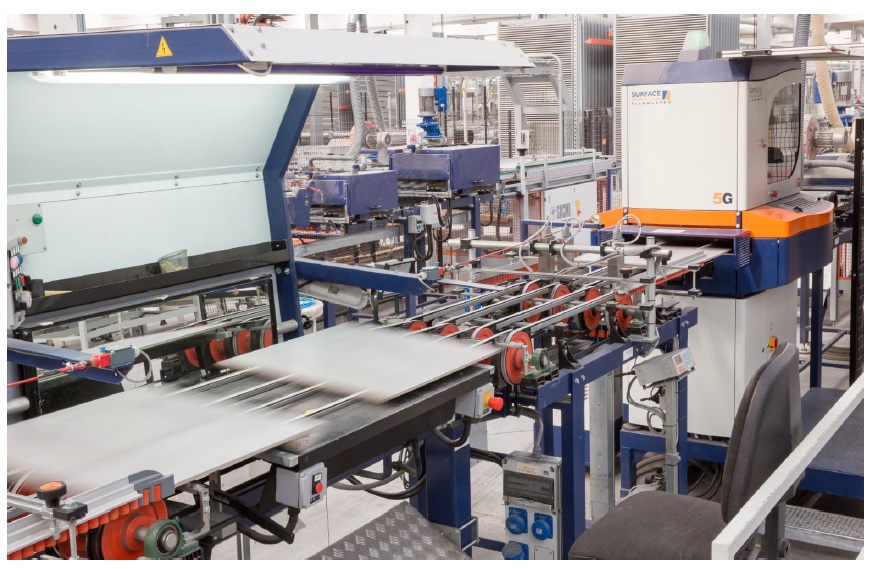
Finished product inspection:
Over twenty years of experience has allowed Surface Inspection to develop the avant-garde Flawmaster machine setting new boundaries in the field of automatic tile inspection systems. This has been achieved thanks to the vast experience acquired from the hundreds of systems sold and installed worldwide, compact design of the devices, use of LED lighting systems and user-friendliness that allows parameters to be easily set and adjusted.
The Flawmaster machines are designed to inspect ceramic tiles for mechanical, glaze and decoration defects and classify them according to their quality and shade.
